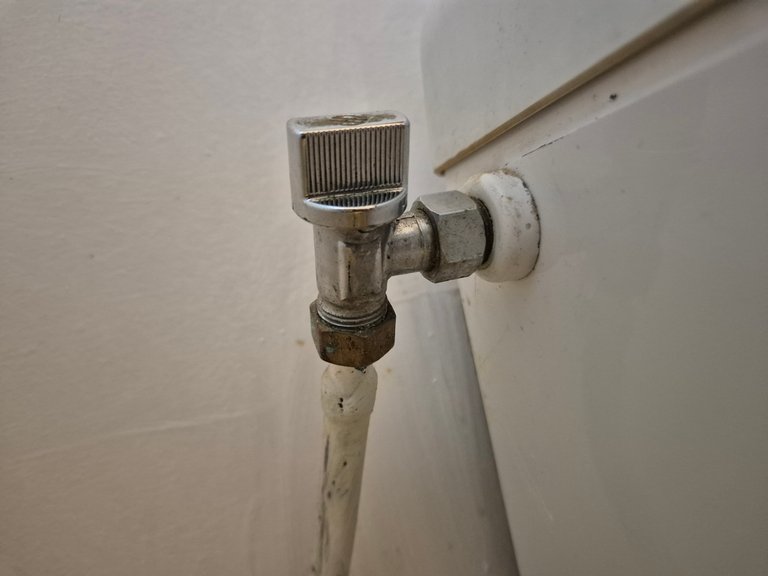
In our new old house, we have a small issue with the toilet: the flush keeps running continuously. Not only is the sound of dripping water extremely annoying, but it’s also a serious waste of water. We can’t help but think about everything that’s literally going down our septic tank…
When you start renovating a house without any DIY experience, there’s no secret: you have to learn on the go. Fortunately, I’m not redoing the entire plumbing of the house (phew!). This gives me the opportunity to progress slowly, step by step, and gain skills without putting too much pressure on myself.
And honestly, there’s a little satisfaction at each milestone, even if they’re small projects. I’ll come back to that.
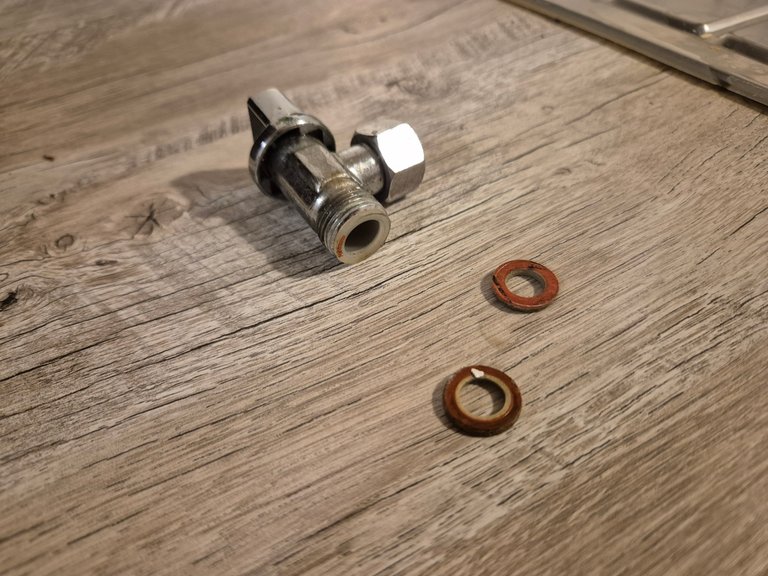
At first, I thought the issue was with the water inlet valve of the flush. So, I decided to dismantle it to check if it was completely clogged with limescale. Apparently, it wasn’t that. However, upon further inspection, I noticed that the seals were completely worn out. Off to the hardware store to buy new ones.
Note to self: seals are never standard. Always take measurements of what you want to replace before leaving. It would have saved me a round trip!
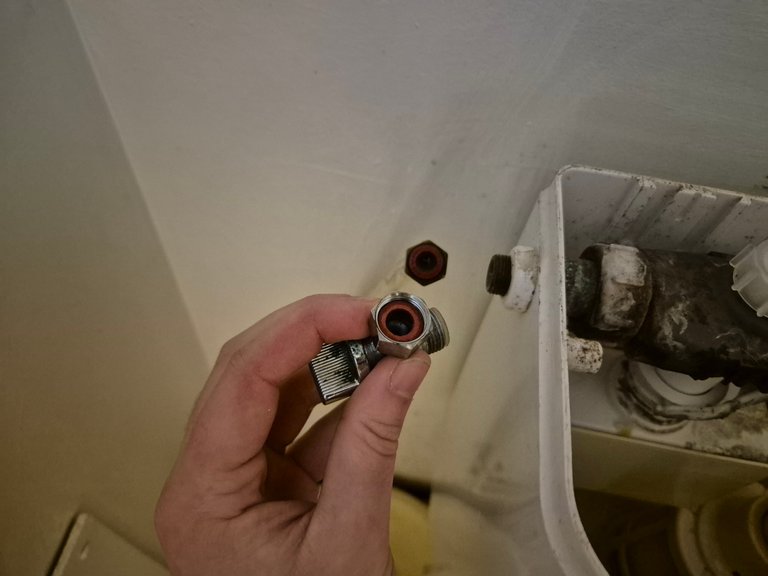
After replacing the seal, I put the valve back in place to test it. And then… bad news: the problem wasn’t resolved. Water kept running into the toilet, even with the water supply turned off.
There had to be some limescale causing trouble somewhere. Anyway, as you can see in the picture, limescale is a real plague in this house. It’s like everything here decided to fossilize in limestone!
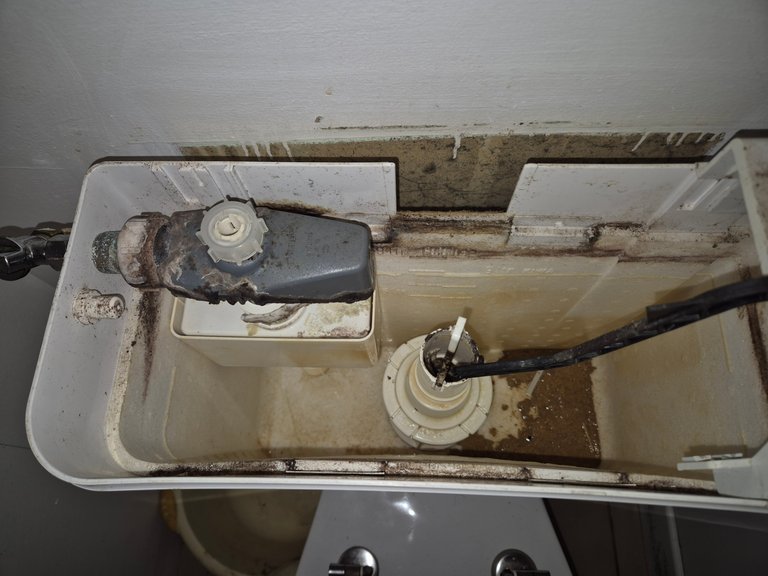
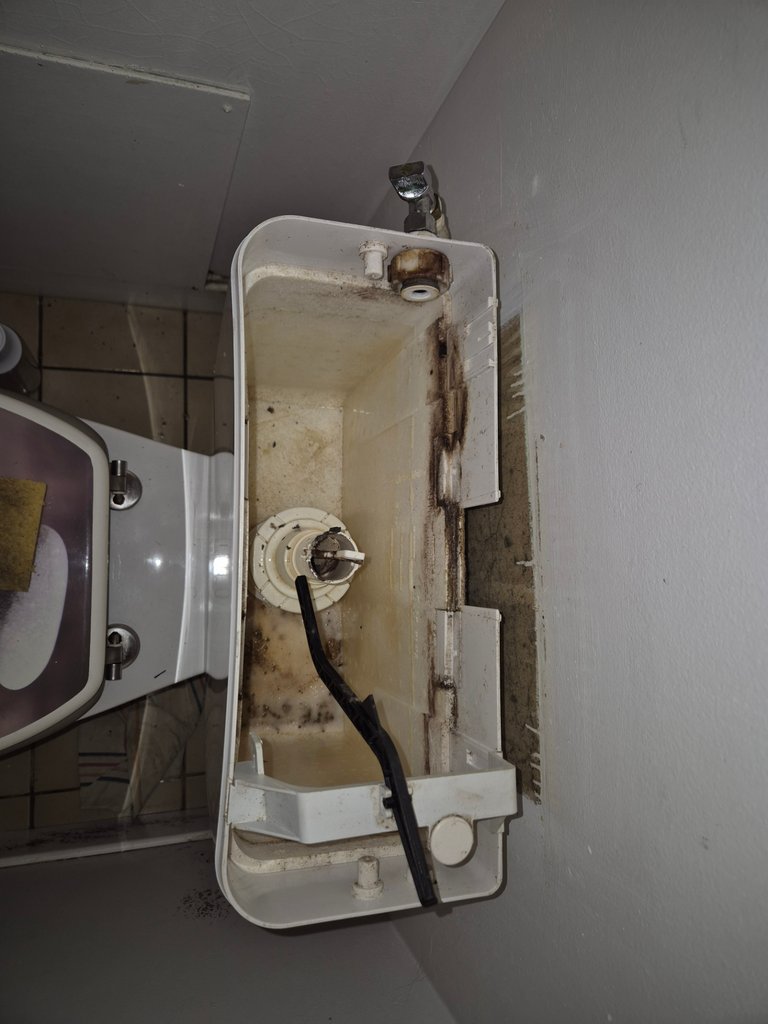
So, I took a moment to understand how the system works. It’s not that complicated, actually. On the left, there’s the float: it detects whether the flush tank is full or not. In the center is the evacuation mechanism, which releases water into the toilet when you flush.
I figured that since I could still hear water running, the problem had to come from the float. So, I decided to dismantle it to be sure.
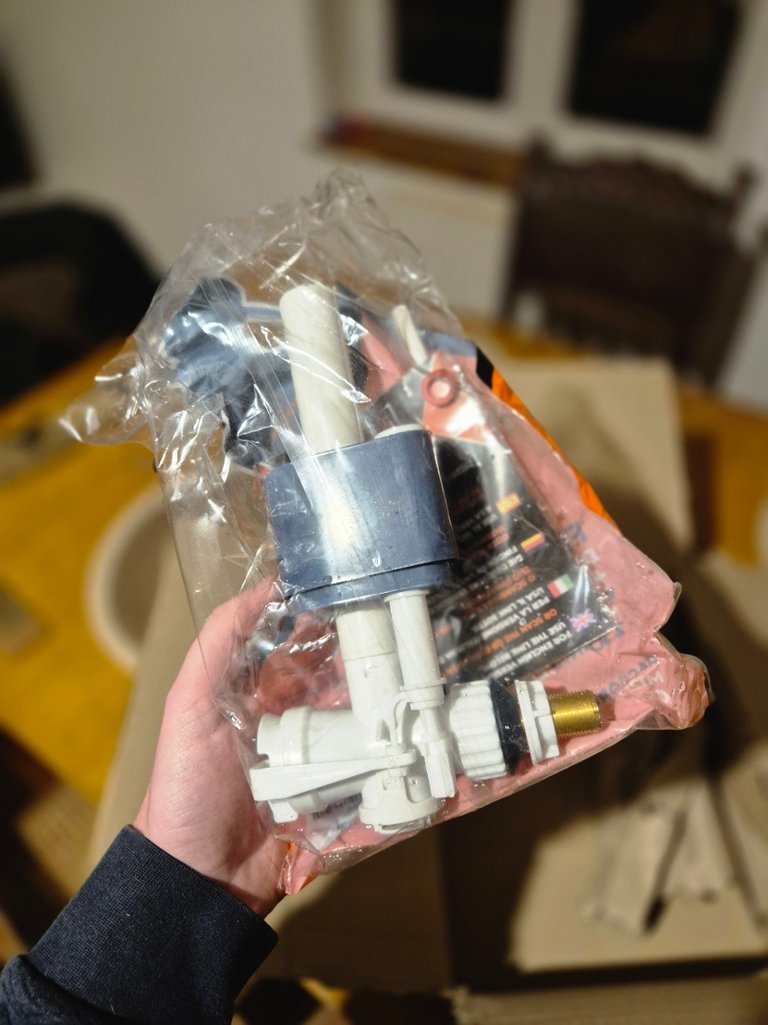
I couldn’t confirm 100% that the issue came from the float, but I was about 80% sure. And for two reasons:
- When I moved the float to try to remove it, the sound of running water almost completely stopped.
- Then, I stepped back to think (okay, I admit, I let a day pass). During that time, I decided to order a new float on Amazon. And bingo! In the product description, the seller described exactly the problem I was experiencing.
With that, I was pretty sure the float was the culprit. So, I ordered one, and it arrived fairly quickly.
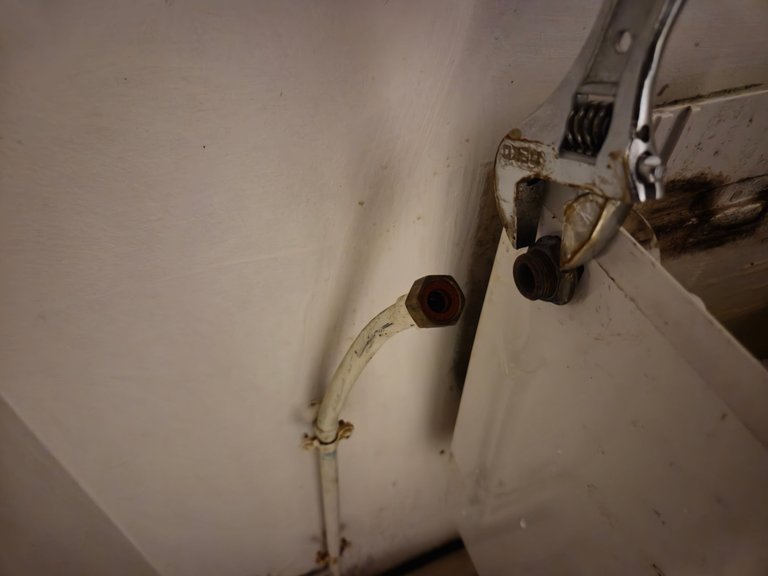
I then set about removing the old float once again. This time, it was a bit more complicated: I had to dismantle the pipes because the new float I ordered wasn’t quite the same as the old one.
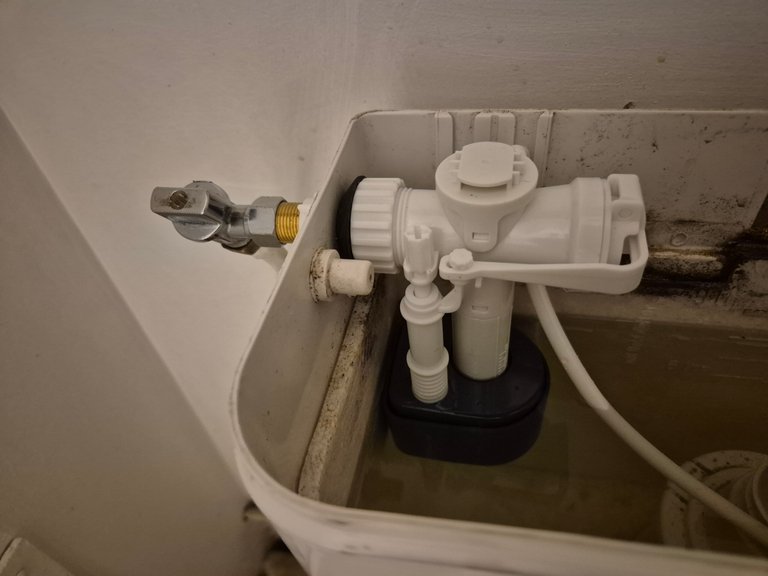
Once the new float was in place, I took a moment to admire my work. And it made me laugh: the brand-new float stood out completely against the rest of the mechanism, which was totally encrusted.
I then turned the water back on. First observation: no more annoying water noise! The flush tank filled properly, exactly up to the level I had set on the float. Out of curiosity, I flushed once "empty," and immediately noticed that the pipe noise had significantly decreased.
And that’s it, problem solved! A small victory that feels good.
With a quick calculation, we were losing about 5 liters of water per hour due to this leak. With tap water priced at €1.71 per m³ (or €0.0017 per liter), this represented a loss of about €0.20 per day. Over a month, that amounted to €6 wasted… not to mention the waste of water itself, which bothered me even more.
The new float cost me €18. Needless to say, the investment paid off quickly, and I sleep better without that constant sound of running water!
Version Française

Dans notre nouvelle maison ancienne, on a un petit souci avec les toilettes : la chasse d’eau coule en continu. Non seulement ça fait un bruit agaçant de petites gouttes qui tombent sans arrêt, mais en plus, c’est un vrai gaspillage d’eau. On ne peut pas s’empêcher de penser à tout ce qui part littéralement dans notre fosse septique…
Quand on se lance dans la rénovation d’une maison sans avoir la moindre expérience en bricolage, il n’y a pas de secret : il faut apprendre sur le tas. Heureusement, je ne suis pas en train de refaire toute la plomberie de la maison (ouf !). Ça me donne l’occasion de progresser doucement, pas à pas, et de gagner en compétences sans me mettre trop de pression.
Et franchement, il y a une petite satisfaction à chaque étape franchie, même si ce sont des petits projets. J'y reviendrais.

Au début, je pensais que le problème venait du robinet d’arrivée d’eau de la chasse d’eau. J’ai donc décidé de le démonter pour vérifier s’il n’était pas complètement entartré. Visiblement, ce n’était pas ça. Par contre, en inspectant un peu plus, j’ai remarqué que les joints étaient complètement morts. Direction le magasin de bricolage pour en acheter de nouveaux.
Note à moi-même : les joints, ce n’est jamais standard. Avant de partir, il faut toujours prendre les mesures de ce qu’on veut remplacer. Ça m’aurait évité un aller-retour !

Après avoir remplacé le joint, j’ai remis le robinet en place pour tester. Et là… mauvaise nouvelle : le problème n’était toujours pas réglé. L’eau continuait de couler dans les toilettes, même avec l’arrivée d’eau coupée.
Il y avait forcément du tartre quelque part qui posait problème. De toute façon, comme vous pouvez le voir sur la photo, le tartre est une vraie plaie dans cette maison. On dirait que tout ici a décidé de se fossiliser en calcaire !


J’ai donc pris un moment pour essayer de comprendre comment fonctionne le système. Ce n’est pas si compliqué, en fait. À gauche, on a le flotteur : c’est lui qui détecte si la cuve de la chasse d’eau est pleine ou non. Au centre, il y a le mécanisme d’évacuation, celui qui libère l’eau dans les toilettes quand on tire la chasse.
Je me suis dit que puisque j’entendais toujours l’eau couler, le problème devait forcément venir du flotteur. Alors, j’ai décidé de le démonter pour en avoir le cœur net.

Je n’ai pas pu confirmer à 100 % que le problème venait du flotteur, mais j’étais à peu près sûr à 80 %. Et ça, pour deux raisons :
- Quand je bougeais le flotteur pour essayer de le retirer, le bruit de l’eau qui coulait diminuait presque complètement.
- Ensuite, j’ai pris un peu de recul pour réfléchir (bon, j’avoue, j’ai laissé passer une journée). Pendant ce temps, je me suis dit que je pourrais commander un nouveau flotteur sur Amazon. Et là, bingo ! Dans la description du produit, le vendeur décrivait exactement le problème que je rencontrais.
Avec ça, j’étais quasiment certain que le flotteur était à l’origine du souci. J’en ai donc commandé un, et il est arrivé plutôt rapidement.

J’ai donc entrepris de démonter l’ancien flotteur une nouvelle fois. Cette fois-ci, l’opération était un peu plus compliquée : il a fallu démonter les tuyaux, car le nouveau flotteur que j’avais commandé n’était pas tout à fait identique à l’ancien.

Une fois le nouveau flotteur en place, j’ai pris un moment pour admirer mon travail. Et ça m’a bien fait rire : le flotteur flambant neuf tranche totalement avec le reste du mécanisme, qui était complètement encrassé.
J’ai ensuite rallumé l’eau. Premier constat : plus de bruit d’eau insupportable ! La cuve de la chasse d’eau s’est remplie correctement, pile jusqu’au niveau que j’avais réglé sur le flotteur. Par curiosité, j’ai tiré la chasse une fois "à vide", et j’ai tout de suite remarqué que le bruit des canalisations avait nettement diminué.
Et voilà, problème réglé ! Une petite victoire qui fait plaisir.
En faisant un petit calcul rapide, on perdait environ 5 litres d’eau par heure à cause de cette fuite. Avec un prix de l’eau courante à 1,71 € par m³ (soit 0,0017 € par litre), ça représentait une perte d’environ 0,20 € par jour. Sur un mois, on arrivait à 6 € gaspillés… sans parler du gaspillage d’eau en lui-même, qui me dérangeait encore plus.
Le nouveau flotteur m’a coûté 18 €. Autant dire que l’investissement est vite rentabilisé, et en plus, je dors mieux sans ce bruit incessant d’eau qui coule !
The English translation was done using the DeepL API, and the images were taken with my smartphone.
Posted Using INLEO
!PIZZA
Your post has been manually reviewed for curation by the Principality of Bastion.
Check the Trail of posts we voted
Principality of Bastion - Our Leit Motiv? Let's Grow Together.
Principality's site | Minava NFT Market | Discord | Our Twitch Channel
You may TRAIL this account if you like the curation we do, or join our discord to know more about what we do.

$PIZZA slices delivered:
@itharagaian(9/10) tipped @genesisledger
Have found over the years the water leaking like that is normally the float system, replaced many times over the years.
Seals are no longer rubber it's plastic, not as efficient. I must say that new system looks more complicated but way more efficient in the long run, note to self!
Isn't that the most annoying thing of late nothing the same size, the sound of dripping water..., now to track it down!
@tipu curate
Upvoted 👌 (Mana: 52/62) Liquid rewards.